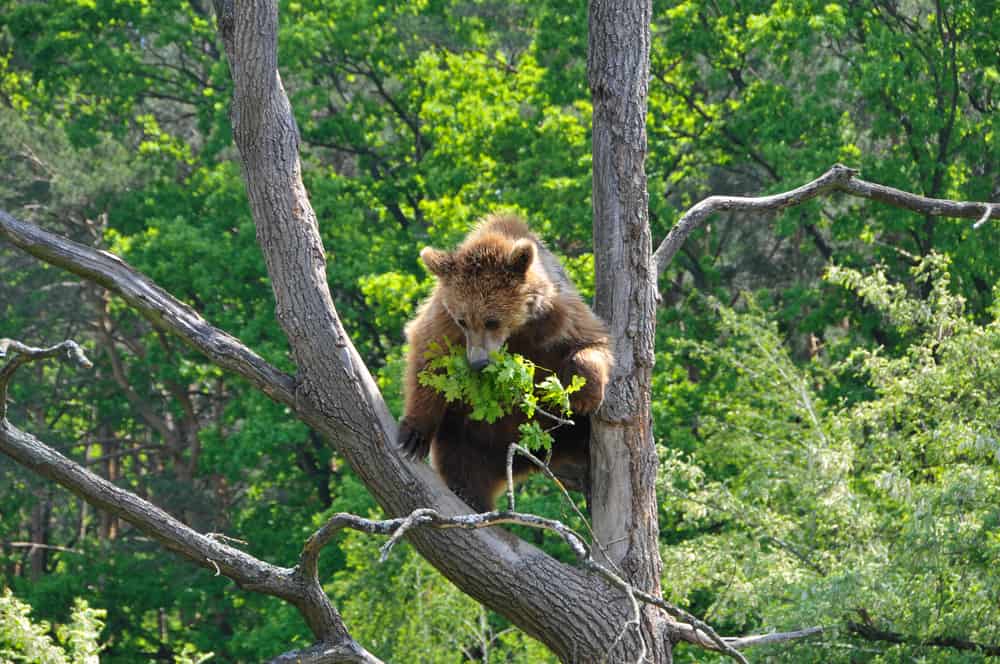Bears are heavy creatures that can weigh as much as 1200 pounds. Considering their size, people have always assumed – bears can’t climb trees. You will be surprised to know the truth, though!
So, can bears climb trees? Yes and no.
We say this because there are 8 main species of bears in the world. While some of them are excellent tree climbers, others aren’t. It’s important to know which ones belong to the good climbers’ category – especially if you come across bears frequently.
In today’s post, we will discuss this topic in great detail. We will also talk about what you should do if a bear chases you up a tree. Let’s get started!
Can All Bears Climb Trees?
Tree climbing is not a natural thing for a bear to do. But since they are adaptable creatures, you can find bears climbing trees in times of need. These include:
- Escaping predators and enemies
- Finding food, like honey and berries
- Chasing small prey mammals
One thing to note is that a bear will absolutely climb a tree to attack a less threatening enemy, such as humans. If a person annoys, disturbs, or risks the safety of bears in any way, they will chase after you – even up a tree!
However, the good news is that all bears can’t climb trees. There are 8 different species with different tree-climbing abilities. Let’s have a look at each one of them in detail!
1. American Black Bear
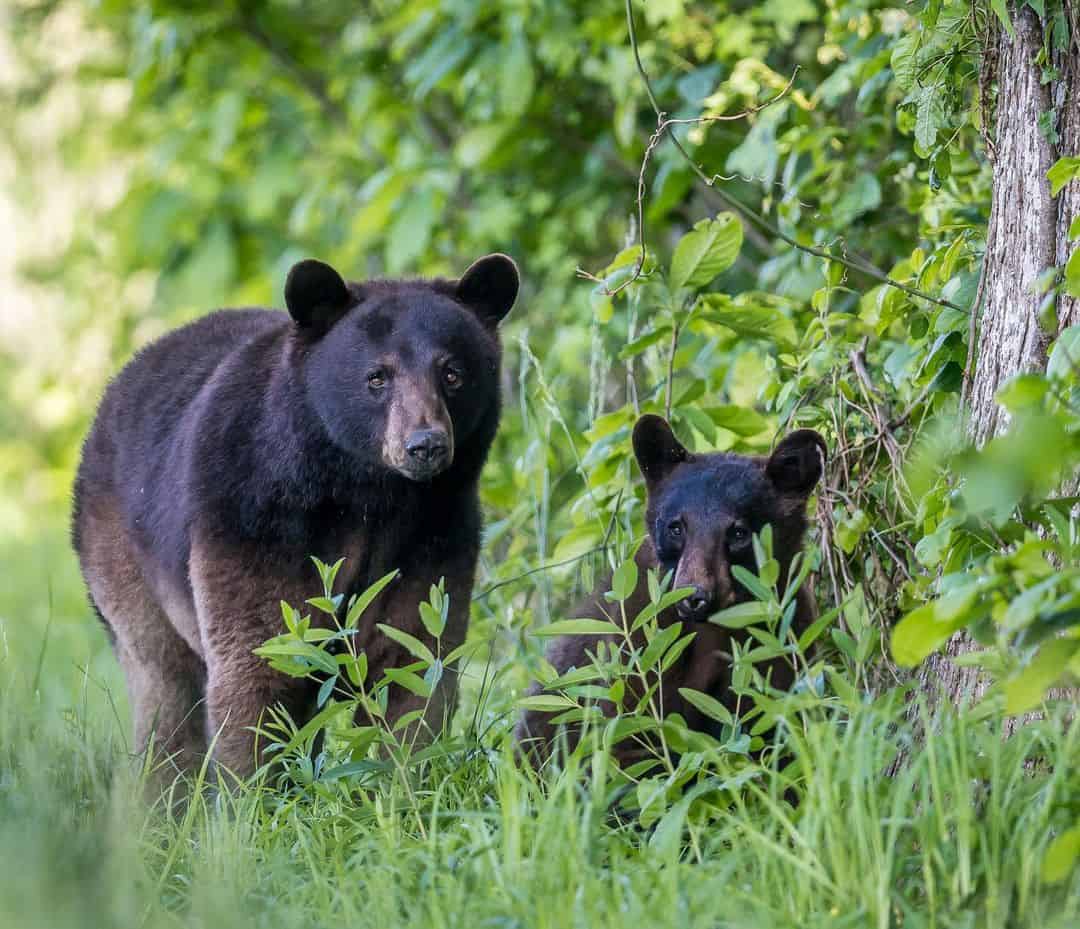
Image Credit: jberemanphotography
Black bears are the most common species in the United States of America. They are also found in Canada (except for Prince Edward Island) and Mexico.
Apart from their black color, these bears have a distinctive tan muzzle. They don’t have the huge shoulder hump like the grizzlies, which makes their appearance less aggressive. But don’t be fooled!
Black bears are extremely powerful and kill humans in a single strike. Their curved claws and small bodies make them agile tree climbers too. However, unlike most animals, a black bear will use its rear legs to descend.
2. Asiatic Black Bear
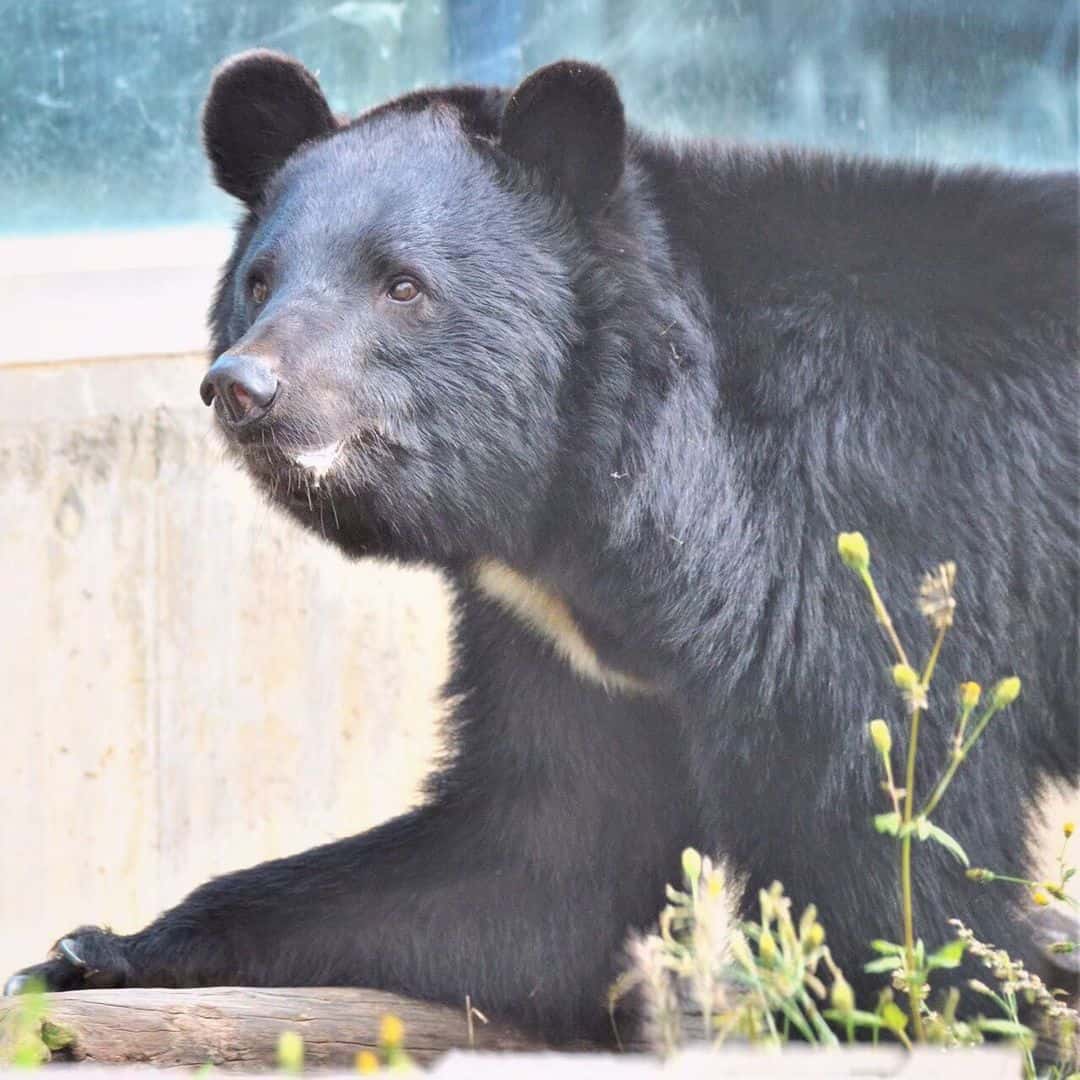
Image Credit: non_hoi_park_animals
As the name suggests, this specie is native to Asian countries. These include Pakistan, Cambodia, India, China, Korea, Afghanistan, Japan, Thailand, Russia, Taiwan, Vietnam, Nepal, Iran, Bhutan, Myanmar, Bangladesh, and the Lao PD.
The Asiatic black bears look very much like the American black bears. However, the Asiatic bears have a unique cream or white V marking on their chest. They are also known to be more aggressive and powerful in their attacks.
With that said, they are mainly vegetarians and will spend most of their time in the trees.
3. Brown Bear
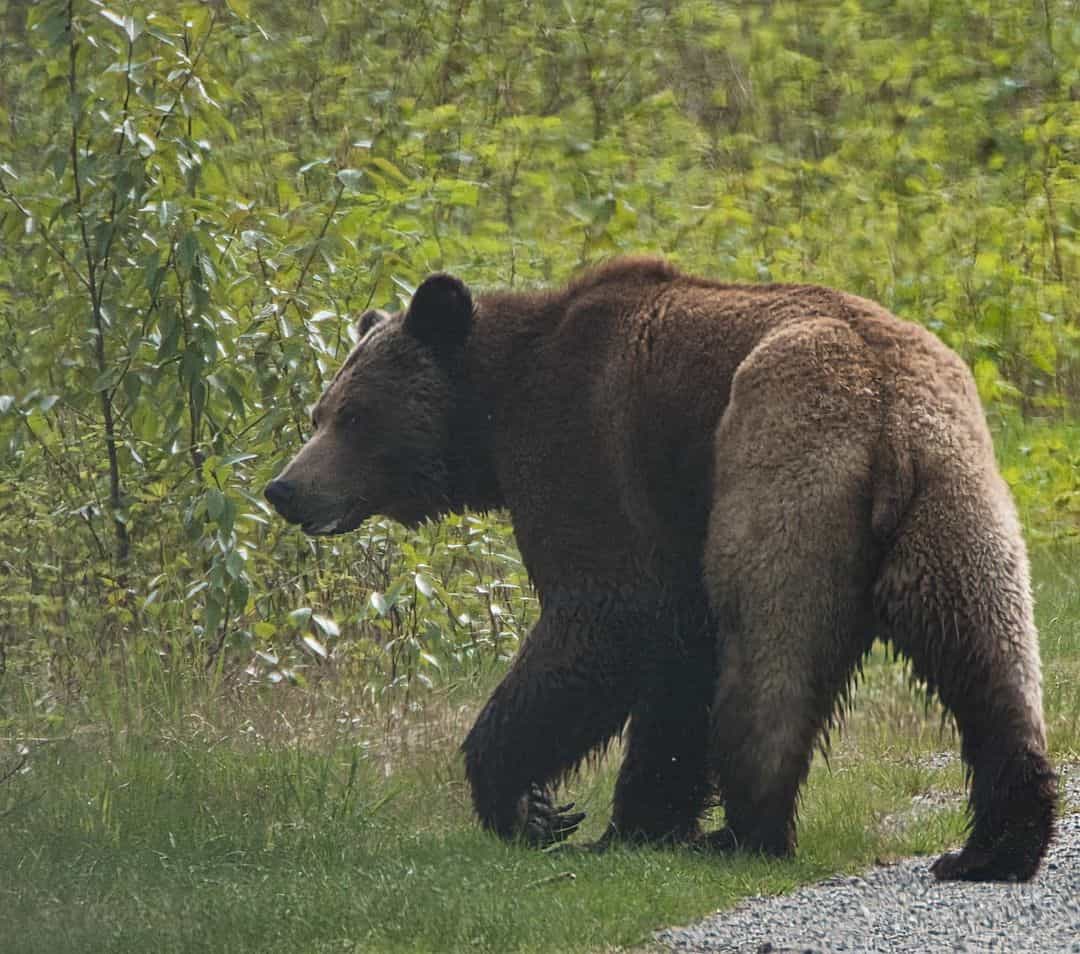
Image Credit: icecoastphotography
Brown bears have 16 subspecies, which makes them the most abundant type in the world. You can find them, in parts of Europe, North America, and Asia. However, in North America, brown bears are more commonly known as grizzly bears.
This is because their hair appears to be grizzled. Some also believe the name is derived from the word grisly, which means horrible. Apart from this, the grizzlies have the same brown coat, huge body, and prominent shoulder hump that all brown bears have.
Adult brown bears aren’t good tree climbers because of their size. They rely on the branches as steps to pull them up and down the tree. If a tree has weak branches, the brown bears won’t risk climbing.
Comparatively, young brown bear cubs can climb the tree fast. Their small size enables them to chase the prey high in the branches.
4. Giant Panda
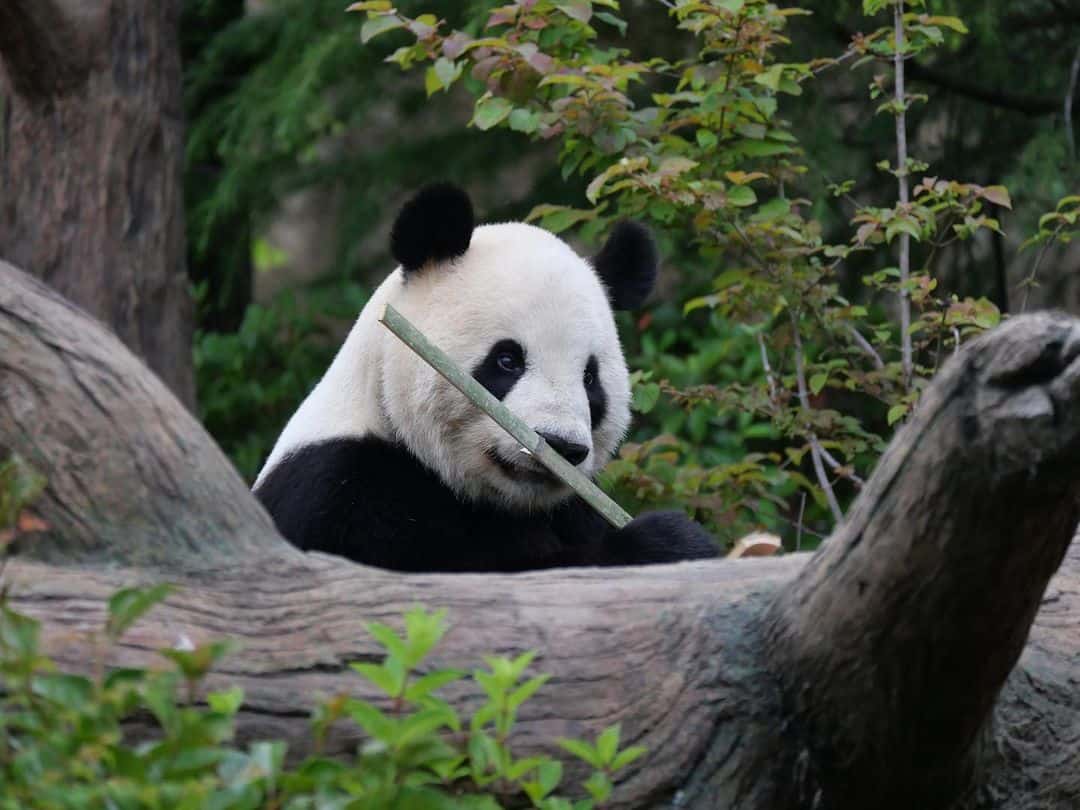
Image Credit: maririn392
Pandas are native to Chinese rainforests. They are generally harmless creatures, who like to avoid conflicts and fights. But let’s not forget that they have a bite strength of 1300N!
Only polar bears, tigers, lions, and grizzlies have a bite strength greater than that. So, if threatened or infuriated, a panda can cause serious damage.
Pandas are also fond of high altitudes. They like to climb trees and stay at heights as high as 13,000 feet.
5. Sloth Bear
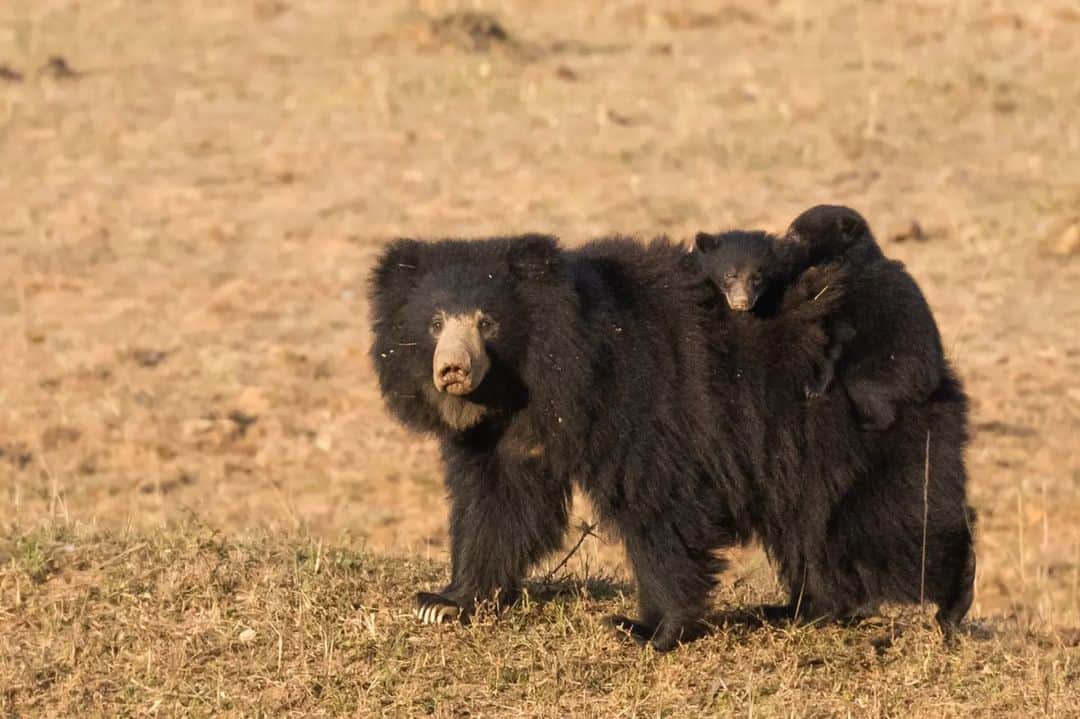
Image Credit: trikansh_sharma
Also called honey bears, the sloth bears are found in lowland places like India, Nepal, Sri Lanka, and Bhutan. They may also be present in Bangladesh.
Physically, the sloth bears are medium-sized with shaggy black coat. Their fur is longer around the head and neck, which gives them a wild look. These bears are quite aggressive too.
They have long claws that help them to fight enemies and climb trees. You can often find sloth bears trying to knock down honeycombs from trees.
6. Andean Bear
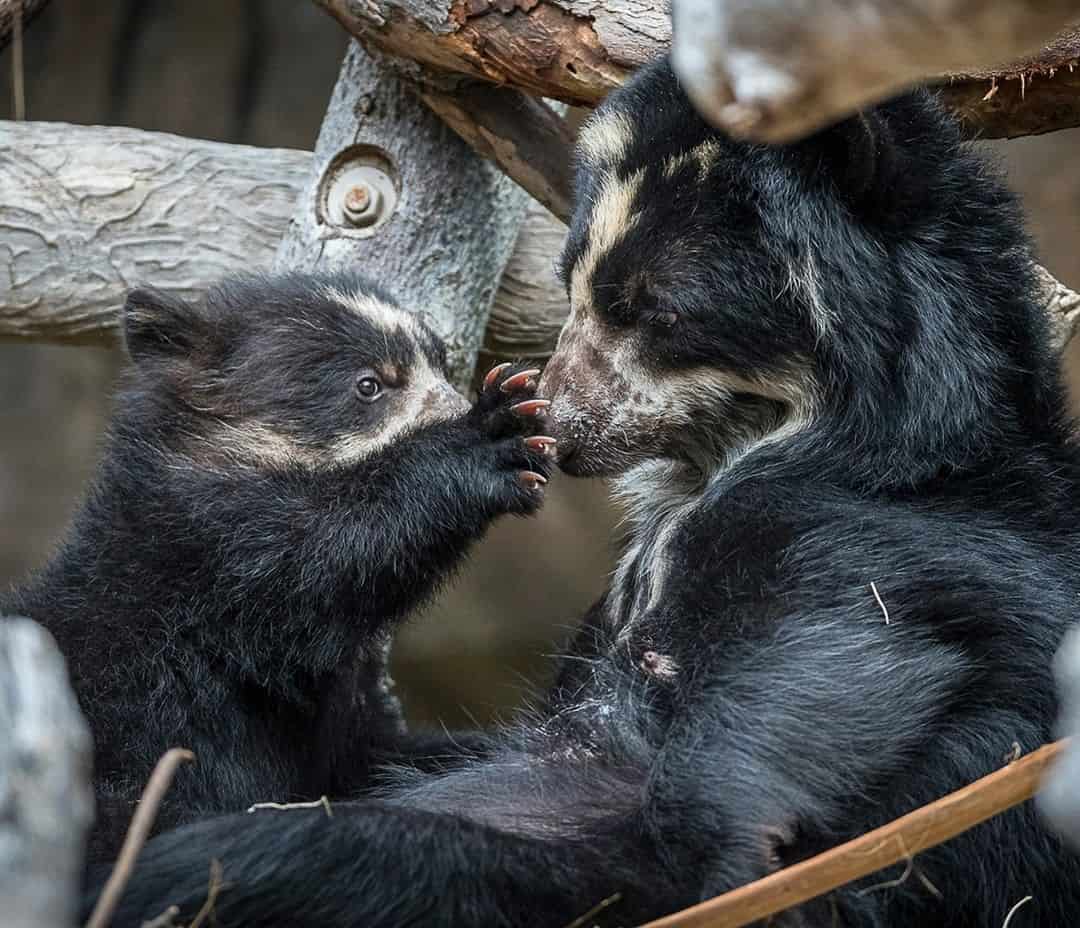
Image Credit: sandiegozoo
Andean bears prefer to live in higher altitude areas of South America. This includes Chile, Peri, Bolivia, Ecuador, and Colombia. These bears have no subspecies, and extensive deforestation has endangered them.
Only 18,000 Andean bears are said to exist in the world. So, the chances of coming across them are very low. But, in case you do, know that Andean bears are great at tree climbing.
They will quickly climb a tree to escape a nearby danger. They will also use tree branches to create platforms for rest and food storage.
7. Sun Bear
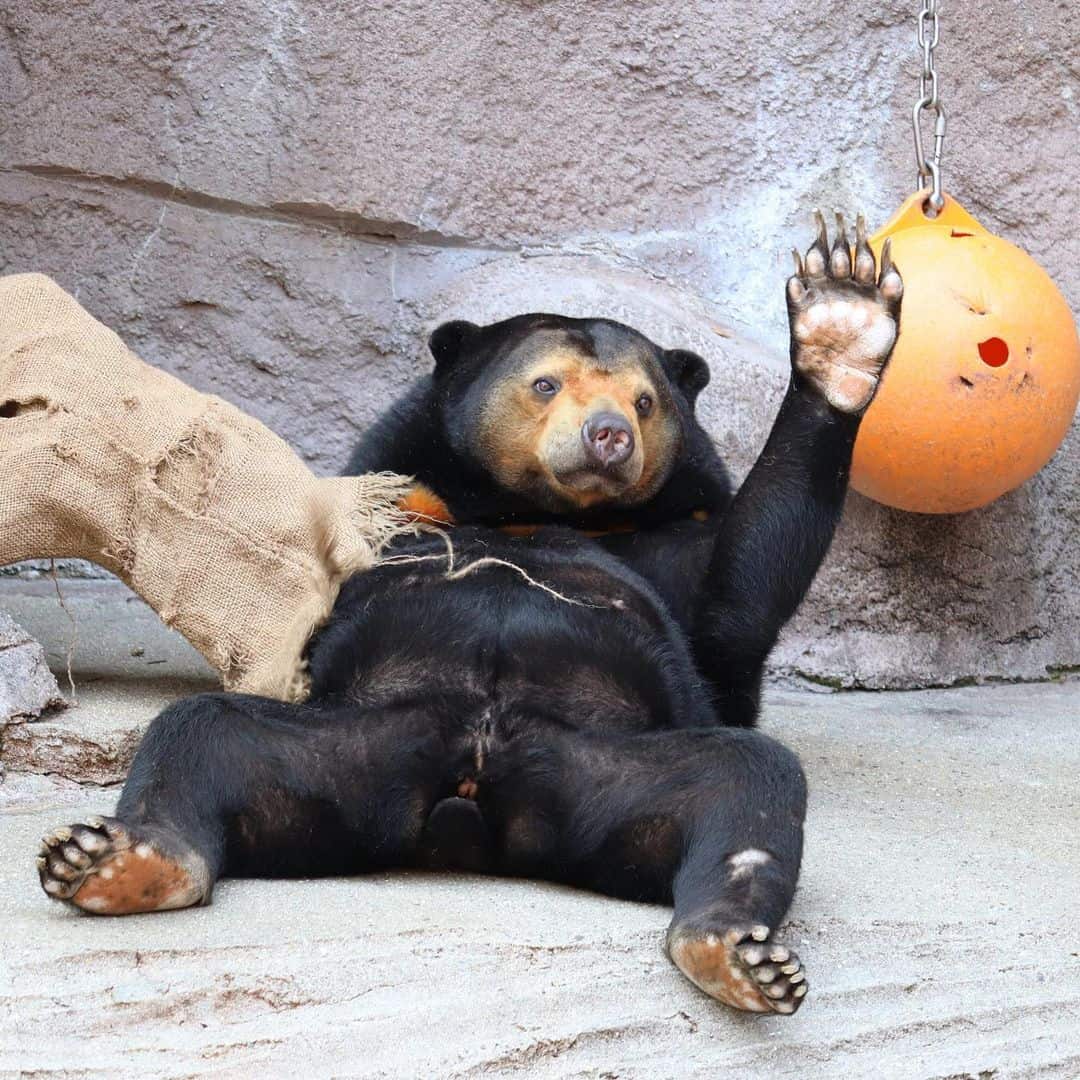
Image Credit: adesso_ojisan
Sun bears are the smallest bear species yet. The male sun bear grows to be 5 feet long, which is half of an average American black bear!
Their shiny black coat is also short and sleek. A distinctive gold crescent is present on their chests. Hence, they have the name – sun bears.
These bears are powerful and agile. Their small size and strong claws enable them to climb the tallest trees easily. They are often found sleeping on the branches.
8. Polar Bear

Image Credit: 55sappi
With a beautiful white coat, it is hard to miss out on a polar bear. This bear specie is widely found in the Arctic, but you can also spot them in Canada, Russia, Greenland, Alaska, and Norway.
Although they are considered to be the strongest (after adult grizzly bears), polar bears choose to escape danger than confront it. They only attack when they have no option left.
Another interesting fact about polar bears is that they are the only bear species that can’t climb trees. It’s simply because the Arctic doesn’t have trees, so polar bears lost the ability to evolve.
How Fast Can Bears Climb Trees?
The tree-climbing speed of bears greatly depends on the type. But, generally speaking, bears are agile tree climbers.
Black bears are the fastest climbers, with the ability to climb 100 feet in 30 seconds or less. This includes both American and Asiatic black bears. The list is followed by Sun bears, Sloth bears, Andean bears, and Pandas.
Brown bears are the slowest because of their enormous build. They are unable to get up on weak or extremely tall trees. But they can climb up and down small trees easily when motivated.
Also, don’t mistake their slow tree-climbing speed for their general speed. Grizzly bears are the fastest runners among all bear species. A grizzly can cover 35 to 40 meters per hour!
How Do Bears Climb Trees So Fast?
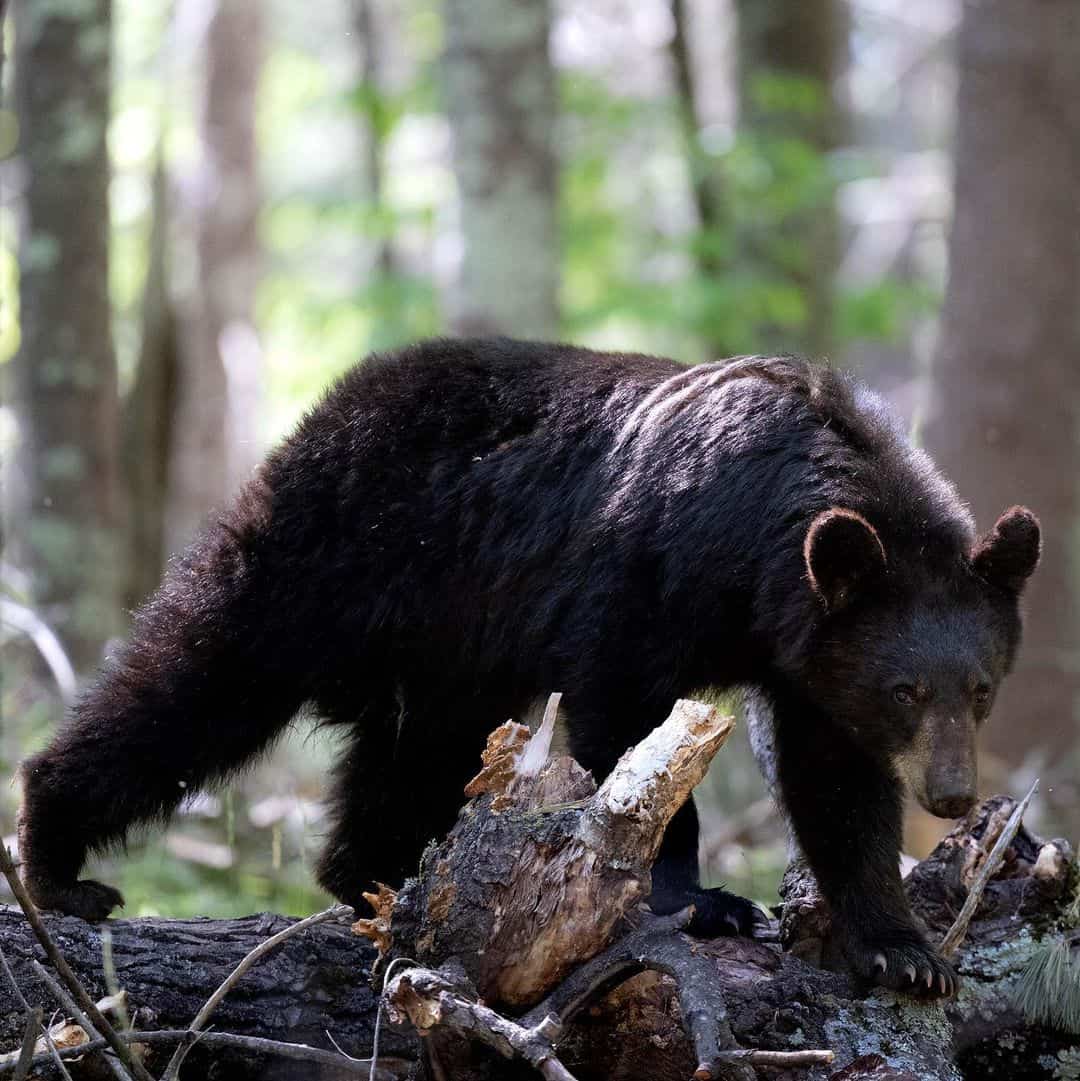
Image Credit: eightlegsphoto
Bears display several different movements when climbing a tree. Some walk up the slant branches, whereas some jump onto the higher branches. However, the commonly used method is to pull themselves up.
All bears have powerful curved claws that are perfect for gripping the tree bark. A bear will first dig its claws in the tree and then use its padded feet to hoist itself up. If there is a strong branch ahead, the bear might temporarily use it to take a rest.
When descending, a bear will use the same technique. This is unlike most mammals that climb down with their headfirst. If the distance to the ground is short, a bear will often slide down too.
However, Giant Pandas follow a unique way. First, they cling to the tree trunk using their claws and limbs. Then, they press their large head firmly against the trunk and move the limbs upwards. They continue this process until they have pulled themselves to the desired spot.
What To Do If a Bear Chases You Up a Tree?
There’s absolutely nothing you can do when a bear decides to chase you up a tree. As mentioned, bears are agile climbers and will climb faster than you ever can. So, if a bear attacks you, never climb a tree.
Instead, identify the type of bear and adjust your course of action accordingly. When confronted by a grizzly, the best strategy is to play dead. Lay down on your stomach and wrap your hands around your neck and lower head.
Keep the bag on your back, spread your legs, and stay calm. Mostly, brown bears just try to scare you away. They bluff by charging at the person and then turning away at the last moment. So, give in and play dead.
However, if you run, they will think of you as food. This is when things go worse because an aggressive brown bear won’t leave you until it has caught you.
In the case of black bears, you should do the opposite. Slowly back away and run to a safe spot. If the bear catches up and attacks you, fight back by hitting it on the nose and eyes. The bear will think of it as resistance and go away.
With all that said, let’s consider a scenario where the bear isn’t attacking you but climbing a tree on which you are already present. Here you can protect yourself by making loud, scary noises and frantically waving your hands. Or you can use a bear pepper spray.
Last Words
By now, we hope the answer to the question – can bears climb trees – is pretty clear. But if you still have any queries, let us know in the comments below. We’ll love to help!
